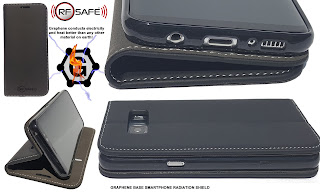Graphene material: Thin sheet stronger than diamond
Graphene has been produced unintentionally in small quantities for centuries through the use of pencils and other similar graphite applications. It was observed originally in electron microscope in 1962, but it was studied only while supported on metal surfaces. The Graphene material was later rediscovered,isolated, and characterized in 2004 by Andre Geim amd konstantin Novoselov at the University of Manchester.
Graphene is an allotrope of carbon consisting of a single layer of carbon atom arrange in a hexagonal lattice. It is a basic structural element of many other allotropes of carbon, such as graphite, diamond, charcoal, carbon nano-tubes and fullerens.
>Properties of Graphene:
1. Electronic properties:
It is one of the best electrical conductors on Earth. The unique atomic arrangement of the carbon atoms in graphene allows its electrons to easily travel at extremely high velocity without the significant chance of scattering, saving precious energy typically lost in other conductors.Scientists have found that graphene remains capable of conducting electricity even at the limit of nominally zero carrier concentration because the electrons don't seem to slow down or localize. The electrons moving around carbon atoms interact with the periodic potential of graphene's honeycomb lattice, which gives rise to new quasiparticles that have lost their mass, or rest mass (so-called massless Dirac fermions). That means that graphene never stops conducting. It was also found that they travel far faster than electrons in other semiconductors.
2. Mechanical properties:
3. Stiffness:
4. Strength:
5. Toughness:
>Methods to prepare Graphene are:
2. Chemical Vapor Deposition (CVD)
3. Epitaxial growth on SiC substrates
4. chemical reduction of exfoliated graphene oxide
5. Liquid phase exfoliation (LPE) of graphite
6. Unzipping of carbon nano-tubes.
>Some applications of graphene are:
1. Energy storage and solar cells:
These examples highlight the four major energy-related areas where graphene will have an impact: solar cells, super capacitors, graphene batteries, and catalysis for fuel cells.
👉To know more about best car batteries click on the link given below:
https://www.bestreviewslist.com/best-car-batteries/
2. Sensor applications:
Researchers also have begun to work with graphene foams – three-dimensional structures of interconnected graphene sheets with extremely high conductivity. These structures are very promising as gas sensors and as biosensors to detect diseases.
3. Electronics applications:
4. Transistors and memory:
Some of the most promising applications of graphene are in electronics (as transistors and interconnects), detectors (as sensor elements) and thermal management (as lateral heat spreaders). The first graphene field-effect transistors (FETs) – with both bottom and top gates – have already been demonstrated. At the same time, for any transistor to be useful for analog communication or digital applications, the level of the electronic low-frequency noise has to be decreased to an acceptable level.Transistors on the basis of graphene are considered to be potential successors for the some silicon components currently in use. Due to the fact that an electron can move faster through graphene than through silicon, the material shows potential to enable terahertz computing.
In the ultimate nano-scale transistor – dubbed a ballistic transistor – the electrons avoid collisions, i.e. there is a virtually unimpeded flow of current. Ballistic conduction would enable incredibly fast switching devices. Graphene has the potential to enable ballistic transistors at room temperature.
5. Flexible, stretchable and foldable electronics:
That means that, in addition to a foldable substrate like paper, the conductor that is deposited on this substrate also needs to be foldable. To that end, researchers have demonstrated a fabrication process for foldable graphene circuits based on paper substrates.Companies like Samsung, LG, Lenovo and many more are in the race to develops foldable screen or foldable smartphone.
Scientists have devised a chemical vapor deposition (CVD) method for turning graphene sheets into porous three-dimensional foams with extremely high conductivity. By permeating this foam with a siloxane-based polymer, the researchers have produced a composite that can be twisted, stretched and bent without harming its electrical or mechanical properties.
6. Photodetectors:
There is a very strong research interest in using graphene for applications in optoelectronics. Graphene-based photo detectors have been realized before and graphene's suitability for high bandwidth photo detection has been demonstrated in a 10GBit/s optical data link.
7. Coatings:
Graphene also is the world's thinnest known coating for protecting metals against corrosion. It was found that graphene, whether made directly on copper or nickel or transferred onto another metal, provides protection against corrosion.Researchers demonstrated the use of graphene as a transparent conductive coating for photonic devices and show that its high transparency and low resistivity make this two-dimensional crystal ideally suitable for electrodes in liquid crystal devices (LCDs).
Since graphene is light, hard and transparent material rather than using screen protector or tempered glass or any gorilla glass protection graphene coating can be used to protect smartphone, computers and laptop screens.
8. Biotechnology and medicine:
In the decades-old quest to build artificial muscles, many materials have been investigated with regard to their suitability for actuator application (actuation is the ability of a material to reversibly change dimensions under the influence of various stimuli). Besides artificial muscles, potential applications include Micro Electro Mechanical Systems (MEMS), biomimetic micro and nano-robots, and micro fluidic devices. In experiments, scientists have shown that graphene nano ribbons can provide actuation.
9. Radiation shielding:
10. Thermal management:
11. Water purification:
If find this post is useful for you then share with your friends so that they get idea about " Graphenerelatively Element" & don't forget to follow & subscribe my blog to get notification of each & every update. If you have any query ask me in comment section & you can also suggest the topics for next post. Connect to our social media platform for more updates all social media links available in about section.
Friends, here is another great news for you all that we have started youtube channel for daily tech updates, reviews, tips & tricks in hindi you can go & check out channel






























Comments
Post a Comment